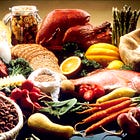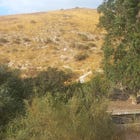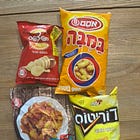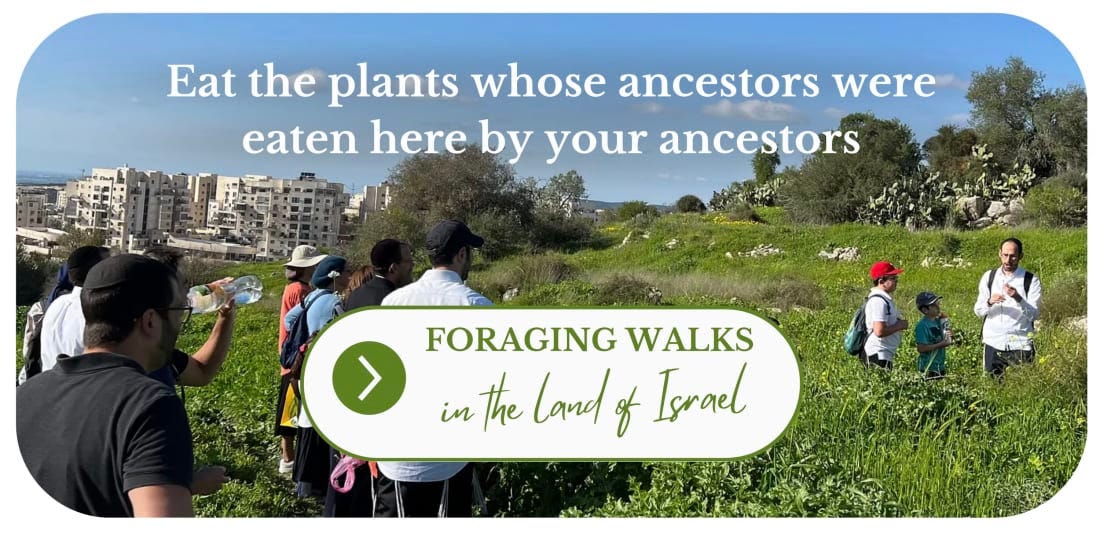Dear Healthy Jew,
One of my favorite food writers, Michael Pollan, often rails against nutritionism, the popular ideology (-‘ism’) that views eating as a project of tallying up the right types of nutrients and numbers of calories. He argues that we’ll live healthier and longer by following three simple rules: eat food, not too much of it, and mostly plants. That’s the gist of his common-sense plan for healthful eating.
I’ve already written about the importance of food quantity, Pollan’s second rule.
In time, I’ll get to the thorny question of how many animal foods we ought to be eating, Pollan’s third rule. (I wrote my college dissertation on this.)
Today it’s high time we examine Pollan’s first suggestion: eat real food, not food-like substances or nutrient delivery systems. The verdict of scientists and wise men of all stripes, colors, and historical periods is that real food will keep us healthy, while everything else will get us sick.
But what exactly is real food?
That’s a hard question to answer, because many products sold today as food give our bodies nothing except risk factors for diseases. For example, when the real plant called sugarcane is stripped to pure sucrose, and then glued to metabolically useless (and possibly dangerous) artificial flavors and colorings to make candy, or plopped into water to make soft drinks, is that really food? Many cakes and cookies are similarly dubious concoctions, except they also contain some wheat: not the actual plant, God forbid, but most of its starch, a bit of protein, and a few stray nutrients.
More religious Healthy Jews might turn for food-definition guidance to the laws of blessings, assuming that if Jewish law requires me to thank God before and after eating something, then it must be good for me, and therefore real food.
I empathize with the sentiment, but it’s wrong. The Talmud (Berachos 36a) rules that barley flour, which in early medieval Babylonia was known to carry harmful intestinal worms, nevertheless warrants a blessing, because eating it brings pleasure. This shows that enjoyment alone generates the spiritual need to thank God, even if the pleasure is misplaced on unhealthy activities. There’s lots of food for thought in this teaching, of course, but one thing is clear: we must look elsewhere to demarcate real food.

Thankfully, Michael Pollan is still here to help. In his delightful book, In Defense of Food: An Eater’s Manifesto, Pollan observes how for most of history people have intuitively known what’s edible for them, much in the same way that cows know to eat grass and not wood (or people). Perhaps they got some guidance on exactly what, when, and how to each, but everyone learned the basics from their cultures and mothers.
However, because of food preparation’s industrialization over the last century, that tradition has mostly unraveled in Western countries, especially in the industry-ruled, tradition-weak United States. (I’ve shared many a repast with dear French and Dutch relatives, and am always amazed how much more innate wisdom they have about eating than American melted-pots like me.) Instead of cultures and mothers, Walmart and Amazon educate us on what and how much to eat, but they care only about shareholders’ portfolios, not our health. Many of us have largely forgotten what’s edible food.

Yet we’re not so far away from bygone days that it’s impossible to identify and find real food.
Here are some of Michael Pollan’s practical methods to discern real food from food-like substances. Real food includes things that:
Your great-great-grandmother would recognize as food.
Are capable of rotting.
Contain ingredients that are familiar and pronounceable.
Don’t make health claims.1
In my understanding, the first three criteria serve to link real food with real life: grounded in historical tradition, impermanent, and readily understood.
The last suggestion cuts to real food’s core: it’s healthy because it’s authentic, so it doesn’t need to promote anything special. An apple is good for you because it grew on a tree, not because it has lots of this vitamin or that mineral. On the other hand, all the trending health-supporting nutrients can be merged into fruitless fruit-loops, but that won’t make them real food.
I like this approach because it doesn’t send me scurrying after super-duper superfoods, arranging my life around abstract and lifeless charts and indexes that remove all curiosity and social connection from eating. I also don’t need to villainize unhealthy food in shaming terms like bad and junk, but can just call it for what it is: not real.
Seeking real food is about seeking health through balance. If it’s authentic food, then it’s good enough for me. The difference between non-organic grapes and organic goji berries is marginal compared to the difference between any real food and Mountain Dew. And not all food-like substances are created alike: many fulfill most of the criteria for food, and deserve to be known as such. Think plain potato chips, and Israel’s omnipresent Bamba.
You are what you eat, as the saying goes, so it follows that you are as authentic as your food. Eating isn’t a numbers game, but an invitation to become our real selves by finding nourishment from real food.
One Suggestion: Eat food, not food-like substances or nutrient delivery systems.
I know that eating only perfectly real food isn’t practical for everyone. So check out these two follow-up posts about healthy compromises and how to relate to people in a world of food-like substances.
Thank you for reading Healthy Jew.
Here are 2 great paths to continue the journey:
Also check out this intro and index to explore hundreds of posts about our 3 Healthy Jew topics: Wellness with Wisdom, Land of Life (Israel), and Sensible Spirituality.
Finally, always feel free to reach out here with any comments, questions, or complaints:
I look forward to hearing from you!
Be well,
Rabbi Shmuel Chaim Naiman
Please note: All content published on Healthy Jew is for informational and educational purposes only. Talk to a qualified professional before taking any action or substance that you read about here.
In Defense of Food, pp. 148-156












